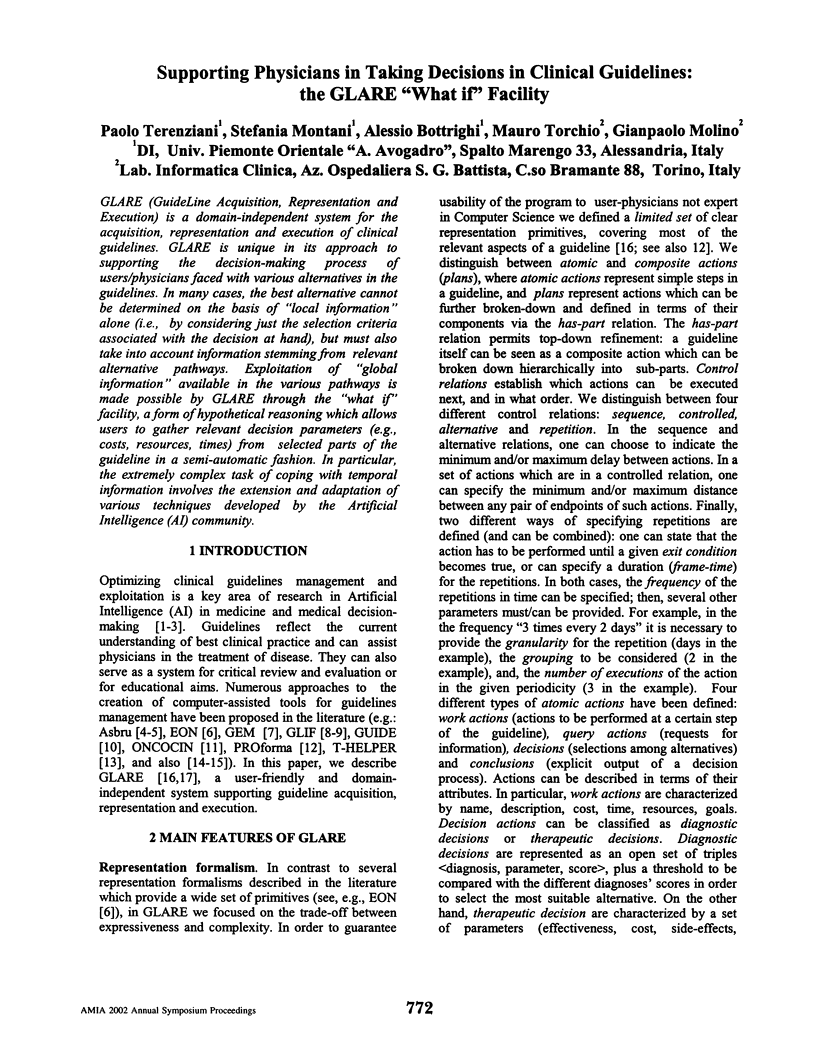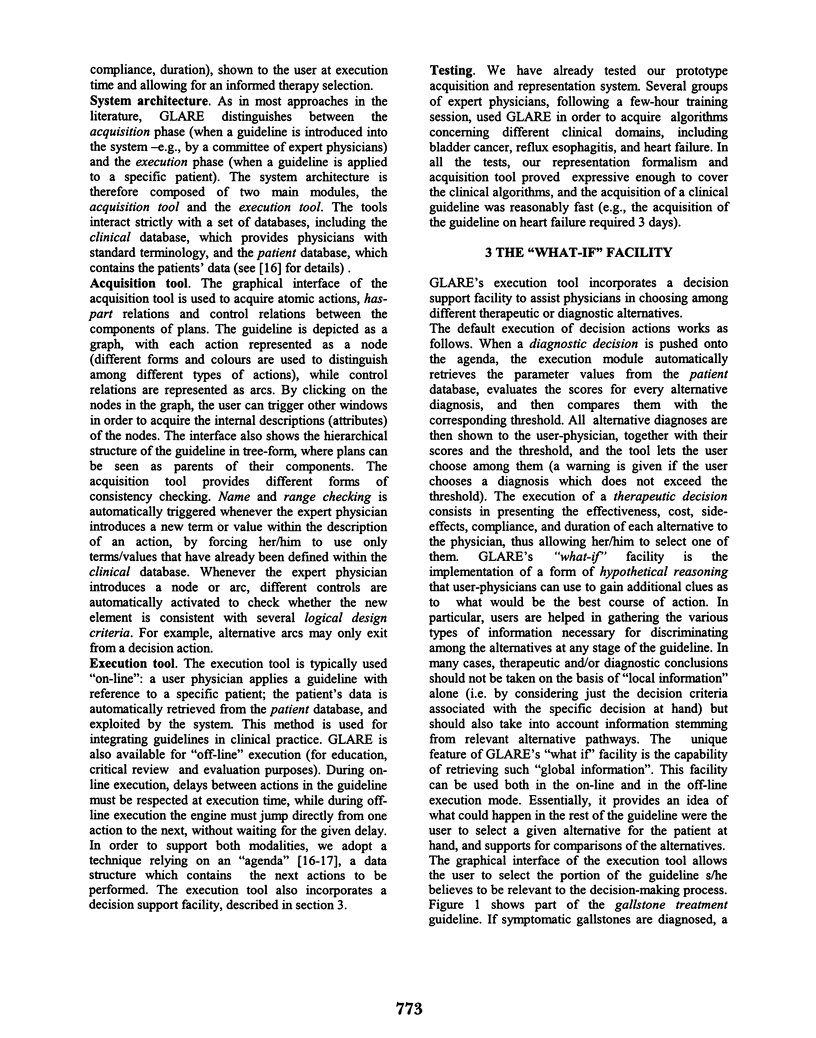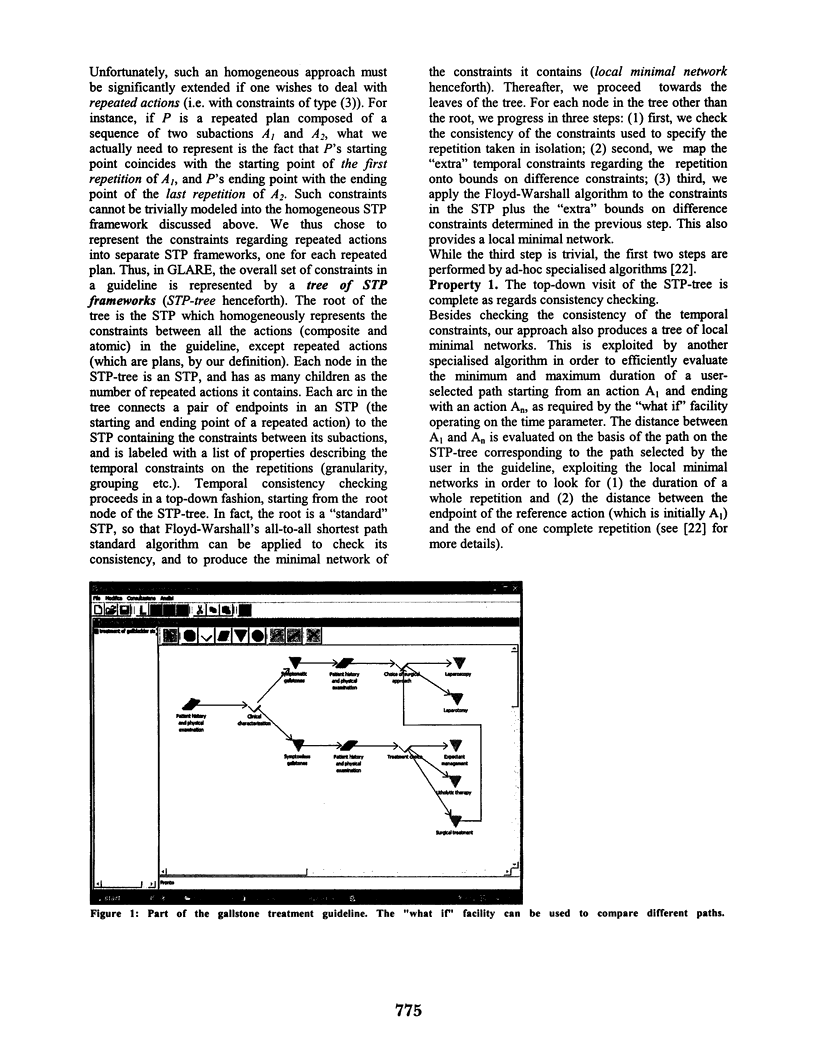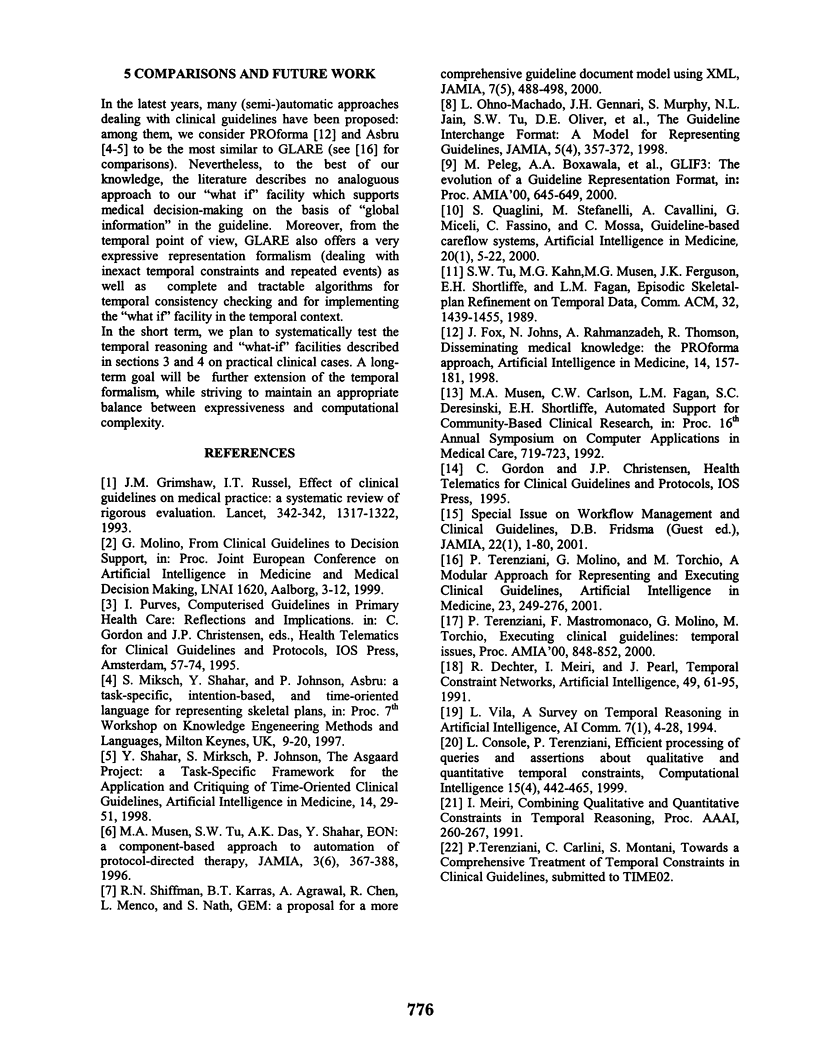Abstract
GLARE (GuideLine Acquisition, Representation and Execution) is a domain-independent system for the acquisition, representation and execution of clinical guidelines. GLARE is unique in its approach to supporting the decision-making process of users/physicians faced with various alternatives in the guidelines. In many cases, the best alternative cannot be determined on the basis of "local information" alone (i.e., by considering just the selection criteria associated with the decision at hand), but must also take into account information stemming from relevant alternative pathways. Exploitation of "global information" available in the various pathways is made possible by GLARE through the "what if" facility, a form of hypothetical reasoning which allows users to gather relevant decision parameters (e.g., costs, resources, times) from selected parts of the guideline in a semi-automatic fashion. In particular, the extremely complex task of coping with temporal information involves the extension and adaptation of various techniques developed by the Artificial Intelligence (AI) community.
Full text
PDF




Selected References
These references are in PubMed. This may not be the complete list of references from this article.
- Fox J., Johns N., Rahmanzadeh A. Disseminating medical knowledge: the PROforma approach. Artif Intell Med. 1998 Sep-Oct;14(1-2):157–181. doi: 10.1016/s0933-3657(98)00021-9. [DOI] [PubMed] [Google Scholar]
- Grimshaw J. M., Russell I. T. Effect of clinical guidelines on medical practice: a systematic review of rigorous evaluations. Lancet. 1993 Nov 27;342(8883):1317–1322. doi: 10.1016/0140-6736(93)92244-n. [DOI] [PubMed] [Google Scholar]
- Musen M. A., Tu S. W., Das A. K., Shahar Y. EON: a component-based approach to automation of protocol-directed therapy. J Am Med Inform Assoc. 1996 Nov-Dec;3(6):367–388. doi: 10.1136/jamia.1996.97084511. [DOI] [PMC free article] [PubMed] [Google Scholar]
- Ohno-Machado L., Gennari J. H., Murphy S. N., Jain N. L., Tu S. W., Oliver D. E., Pattison-Gordon E., Greenes R. A., Shortliffe E. H., Barnett G. O. The guideline interchange format: a model for representing guidelines. J Am Med Inform Assoc. 1998 Jul-Aug;5(4):357–372. doi: 10.1136/jamia.1998.0050357. [DOI] [PMC free article] [PubMed] [Google Scholar]
- Quaglini S., Stefanelli M., Cavallini A., Micieli G., Fassino C., Mossa C. Guideline-based careflow systems. Artif Intell Med. 2000 Aug;20(1):5–22. doi: 10.1016/s0933-3657(00)00050-6. [DOI] [PubMed] [Google Scholar]
- Shahar Y., Miksch S., Johnson P. The Asgaard project: a task-specific framework for the application and critiquing of time-oriented clinical guidelines. Artif Intell Med. 1998 Sep-Oct;14(1-2):29–51. doi: 10.1016/s0933-3657(98)00015-3. [DOI] [PubMed] [Google Scholar]
- Shiffman R. N., Karras B. T., Agrawal A., Chen R., Marenco L., Nath S. GEM: a proposal for a more comprehensive guideline document model using XML. J Am Med Inform Assoc. 2000 Sep-Oct;7(5):488–498. doi: 10.1136/jamia.2000.0070488. [DOI] [PMC free article] [PubMed] [Google Scholar]
- Terenziani P., Molino G., Torchio M. A modular approach for representing and executing clinical guidelines. Artif Intell Med. 2001 Nov;23(3):249–276. doi: 10.1016/s0933-3657(01)00087-2. [DOI] [PubMed] [Google Scholar]


